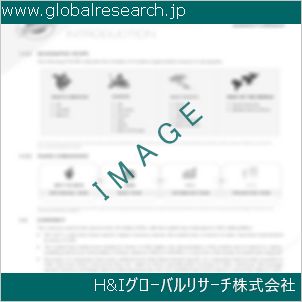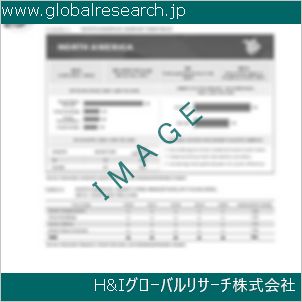1.Research Methodology
1.1.Desk Research
1.2.Real time insights and validation
1.3.Forecast model
1.4.Assumptions and forecast parameters
1.5.Market size estimation
1.5.1.Top-down approach
1.5.2.Bottom-up approach
2.Report Scope
2.1.Market definition
2.2.Key objectives of the study
2.3.Report overview
2.4.Market segmentation
2.5.Overview of the impact of COVID-19 on global 3D cell culture market
3.Executive Summary
4.Market Overview
4.1.Introduction
4.2.Growth impact forces
4.2.1.Drivers
4.2.2.Restraints
4.2.3.Opportunities
4.3.Market value chain analysis
4.3.1.List of raw material suppliers
4.3.2.List of manufacturers
4.3.3.List of distributors
4.4.Innovation & sustainability matrices
4.4.1.Technology matrix
4.4.2.Regulatory matrix
4.5.Porter’s five forces analysis
4.5.1.Bargaining power of suppliers
4.5.2.Bargaining power of consumers
4.5.3.Threat of substitutes
4.5.4.Threat of new entrants
4.5.5.Competitive rivalry intensity
4.6.PESTLE analysis
4.6.1.Political
4.6.2.Economical
4.6.3.Social
4.6.4.Technological
4.6.5.Environmental
4.7.Impact of COVID-19 on 3D Cell Culture Market
4.7.1.Pre-covid market scenario
4.7.2.Post-covid market scenario
5.3D cell culture market Analysis, by Product
5.1.Overview
5.2.Scaffold Based 3D Cell Culture
5.2.1.Definition, key trends, growth factors, and opportunities
5.2.2.Market size analysis, by region
5.2.3.Market share analysis, by country
5.3.Scaffold Free 3D cell culture
5.3.1.Definition, key trends, growth factors, and opportunities
5.3.2.Market size analysis, by region
5.3.3.Market share analysis, by country
5.4.Microfluidic Organ-on-a-chip Models
5.4.1.Definition, key trends, growth factors, and opportunities
5.4.2.Market size analysis, by region
5.4.3.Market share analysis, by country
5.5.Research Dive Exclusive Insights
5.5.1.Market attractiveness
5.5.2.Competition heatmap
6.3D cell culture market Analysis, by Application
6.1.Cancer Research
6.1.1.Definition, key trends, growth factors, and opportunities
6.1.2.Market size analysis, by region
6.1.3.Market share analysis, by country
6.2.Stem Cell Research
6.2.1.Definition, key trends, growth factors, and opportunities
6.2.2.Market size analysis, by region
6.2.3.Market share analysis, by country
6.3.Drug Discovery & Development
6.3.1.Definition, key trends, growth factors, and opportunities
6.3.2.Market size analysis, by region
6.3.3.Market share analysis, by country
6.4.Regenerative Medicine
6.4.1.Definition, key trends, growth factors, and opportunities
6.4.2.Market size analysis, by region
6.4.3.Market share analysis, by country
6.5.Research Dive Exclusive Insights
6.5.1.Market attractiveness
6.5.2.Competition heatmap
7.3D cell culture market Analysis, by End user
7.1.Biotechnology and Pharmaceutical Companies
7.1.1.Definition, key trends, growth factors, and opportunities
7.1.2.Market size analysis, by region
7.1.3.Market share analysis, by country
7.2.Contract Research Laboratories
7.2.1.Definition, key trends, growth factors, and opportunities
7.2.2.Market size analysis, by region
7.2.3.Market share analysis, by country
7.3.Hospitals, Diagnostic Centers, and Academic Institutes
7.3.1.Definition, key trends, growth factors, and opportunities
7.3.2.Market size analysis, by region
7.3.3.Market share analysis, by country
7.4.Research Dive Exclusive Insights
7.4.1.Market attractiveness
7.4.2.Competition heatmap
8.3D cell culture market, by Region
8.1.North America
8.1.1.U.S.
8.1.1.1.Market size analysis, by Product
8.1.1.2.Market size analysis, by Application
8.1.1.3.Market size analysis, by End user
8.1.2.Canada
8.1.2.1.Market size analysis, by Product
8.1.2.2.Market size analysis, by Application
8.1.2.3.Market size analysis, by End user
8.1.3.Mexico
8.1.3.1.Market size analysis, by Product
8.1.3.2.Market size analysis, by Application
8.1.3.3.Market size analysis, by End user
8.1.4.Research Dive Exclusive Insights
8.1.4.1.Market attractiveness
8.1.4.2.Competition heatmap
8.2.Europe
8.2.1.Germany
8.2.1.1.Market size analysis, by Product
8.2.1.2.Market size analysis, by Application
8.2.1.3.Market size analysis, by End user
8.2.2.UK
8.2.2.1.Market size analysis, by Product
8.2.2.2.Market size analysis, by Application
8.2.2.3.Market size analysis, by End user
8.2.3.France
8.2.3.1.Market size analysis, by Product
8.2.3.2.Market size analysis, by Application
8.2.3.3.Market size analysis, by End user
8.2.4.Spain
8.2.4.1.Market size analysis, by Product
8.2.4.2.Market size analysis, by Application
8.2.4.3.Market size analysis, by End user
8.2.5.Italy
8.2.5.1.Market size analysis, by Product
8.2.5.2.Market size analysis, by Application
8.2.5.3.Market size analysis, by End user
8.2.6.Rest of Europe
8.2.6.1.Market size analysis, by Product
8.2.6.2.Market size analysis, by Application
8.2.6.3.Market size analysis, by End user
8.2.7.Research Dive Exclusive Insights
8.2.7.1.Market attractiveness
8.2.7.2.Competition heatmap
8.3.Asia Pacific
8.3.1.China
8.3.1.1.Market size analysis, by Product
8.3.1.2.Market size analysis, by Application
8.3.1.3.Market size analysis, by End user
8.3.2.Japan
8.3.2.1.Market size analysis, by Product
8.3.2.2.Market size analysis, by Application
8.3.2.3.Market size analysis, by End user
8.3.3.India
8.3.3.1.Market size analysis, by Product
8.3.3.2.Market size analysis, by Application
8.3.3.3.Market size analysis, by End user
8.3.4.Australia
8.3.4.1.Market size analysis, by Product
8.3.4.2.Market size analysis, by Application
8.3.4.3.Market size analysis, by End user
8.3.5.South Korea
8.3.5.1.Market size analysis, by Product
8.3.5.2.Market size analysis, by Application
8.3.5.3.Market size analysis, by End user
8.3.6.Rest of Asia Pacific
8.3.6.1.Market size analysis, by Product
8.3.6.2.Market size analysis, by Application
8.3.6.3.Market size analysis, by End user
8.3.7.Research Dive Exclusive Insights
8.3.7.1.Market attractiveness
8.3.7.2.Competition heatmap
8.4.LAMEA
8.4.1.Brazil
8.4.1.1.Market size analysis, by Product
8.4.1.2.Market size analysis, by Application
8.4.1.3.Market size analysis, by End user
8.4.2.Saudi Arabia
8.4.2.1.Market size analysis, by Product
8.4.2.2.Market size analysis, by Application
8.4.2.3.Market size analysis, by End user
8.4.3.UAE
8.4.3.1.Market size analysis, by Product
8.4.3.2.Market size analysis, by Application
8.4.3.3.Market size analysis, by End user
8.4.4.South Africa
8.4.4.1.Market size analysis, by Product
8.4.4.2.Market size analysis, by Application
8.4.4.3.Market size analysis, by End user
8.4.5.Rest of LAMEA
8.4.5.1.Market size analysis, by Product
8.4.5.2.Market size analysis, by Application
8.4.5.3.Market size analysis, by End user
8.4.6.Research Dive Exclusive Insights
8.4.6.1.Market attractiveness
8.4.6.2.Competition heatmap
9.Competitive Landscape
9.1.Top winning strategies, 2021
9.1.1.By strategy
9.1.2.By year
9.2.Strategic overview
9.3.Market share analysis, 2021
10.Company Profiles
10.1.Corning Incorporated
10.1.1.Overview
10.1.2.Business segments
10.1.3.Product portfolio
10.1.4.Financial performance
10.1.5.Recent developments
10.1.6.SWOT analysis
10.1.7.Research Dive Analyst View
10.2.Thermo Fisher Scientific
10.2.1.Overview
10.2.2.Business segments
10.2.3.Product portfolio
10.2.4.Financial performance
10.2.5.Recent developments
10.2.6.SWOT analysis
10.2.7.Research Dive Analyst View
10.3.3D Biotek
10.3.1.Overview
10.3.2.Business segments
10.3.3.Product portfolio
10.3.4.Financial performance
10.3.5.Recent developments
10.3.6.SWOT analysis
10.3.7.Research Dive Analyst View
10.4.TissUse GmbH
10.4.1.Overview
10.4.2.Business segments
10.4.3.Product portfolio
10.4.4.Financial performance
10.4.5.Recent developments
10.4.6.SWOT analysis
10.4.7.Research Dive Analyst View
10.5.Hµrel Corporation
10.5.1.Overview
10.5.2.Business segments
10.5.3.Product portfolio
10.5.4.Financial performance
10.5.5.Recent developments
10.5.6.SWOT analysis
10.5.7.Research Dive Analyst View
10.6.QGel SA
10.6.1.Overview
10.6.2.Business segments
10.6.3.Product portfolio
10.6.4.Financial performance
10.6.5.Recent developments
10.6.6.SWOT analysis
10.6.7.Research Dive Analyst View
10.7.SynVivo
10.7.1.Overview
10.7.2.Business segments
10.7.3.Product portfolio
10.7.4.Financial performance
10.7.5.Recent developments
10.7.6.SWOT analysis
10.7.7.Research Dive Analyst View
10.8.Advanced BioMatrix
10.8.1.Overview
10.8.2.Business segments
10.8.3.Product portfolio
10.8.4.Financial performance
10.8.5.Recent developments
10.8.6.SWOT analysis
10.8.7.Research Dive Analyst View
10.9.Greiner Bio-One International
10.9.1.Overview
10.9.2.Business segments
10.9.3.Product portfolio
10.9.4.Financial performance
10.9.5.Recent developments
10.9.6.SWOT analysis
10.9.7.Research Dive Analyst View
10.10.Lonza
10.10.1.Overview
10.10.2.Business segments
10.10.3.Product portfolio
10.10.4.Financial performance
10.10.5.Recent developments
10.10.6.SWOT analysis
10.10.7.Research Dive Analyst View
11.Appendix
11.1.Parent & peer market analysis
11.2.Premium insights from industry experts
11.3.Related reports
❖ 免責事項 ❖
http://www.globalresearch.jp/disclaimer












